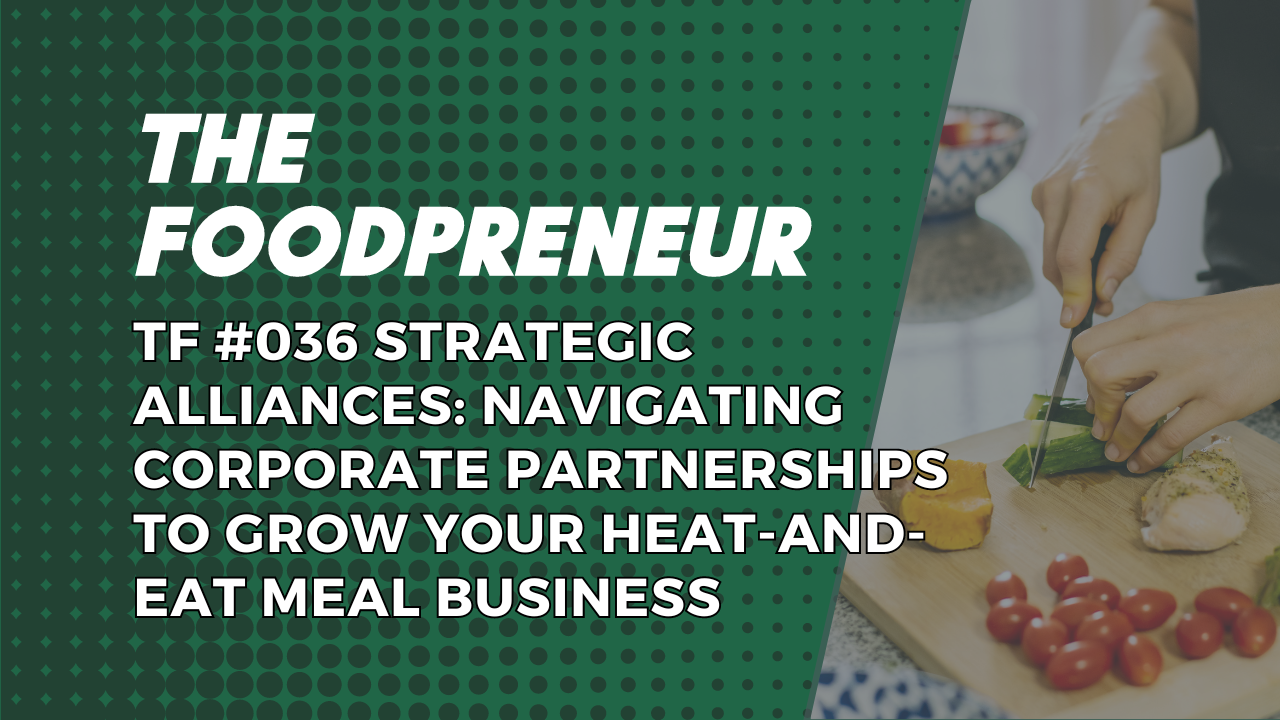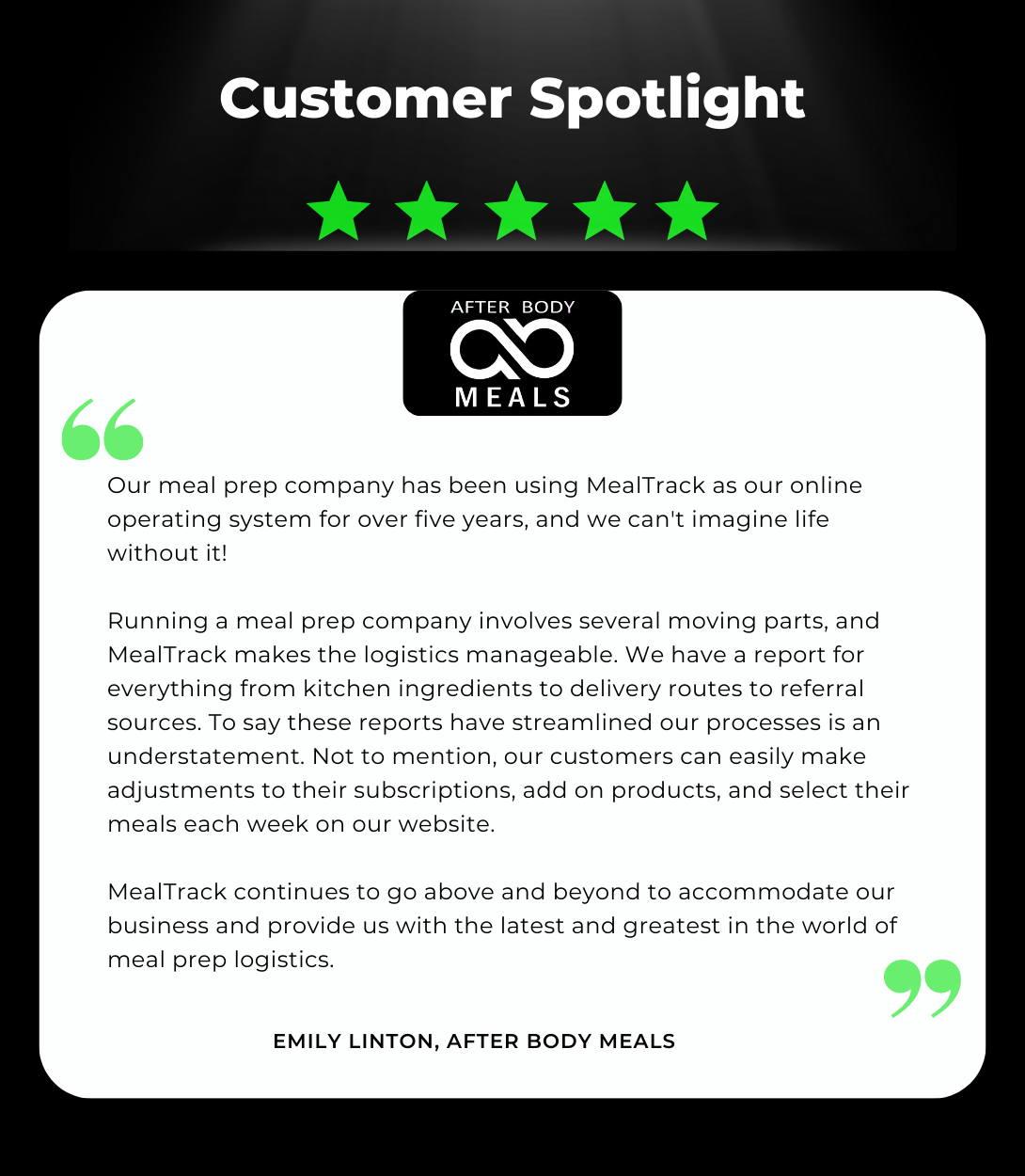The Foodpreneur #036

Strategic Alliances: Navigating Corporate Partnerships to Grow Your Heat-and-Eat Meal Business
More than ever, companies are looking to stay competitive and attract top talent—and increasingly, that means getting creative with corporate perks and benefits.
That’s where your heat-and-eat meal business comes in. Free onsite meals are a compelling perk. Eighty-one percent of leaders say offering free meals and snacks is the best incentive to bring workers back to the offer—and seven out of 10 employees agree. Twenty-nine percent of employees say they’d enjoy work more if their companies offered free lunch.
Your job? Position your heat-and-eat meal business as a simple, effective, affordable solution to keep teams motivated and moving forward. Here’s how to find the right corporate partners and position your business as an essential benefit in 2024 and beyond.
Step 1: Identifying the Right Partners
Finding and engaging the right corporate partners is a critical first step. We recommended focusing on industries and companies where the need for convenient, healthy meals aligns perfectly with the busy lifestyles of their employees.
Industry Focus: Start by identifying industries that inherently demand long working hours or have a culture of working through lunch. Tech companies, law firms, and financial institutions often fit this bill. These environments are where employees will most appreciate the convenience your business provides.
Company Size and Culture: Target companies that are large enough to benefit from your service but not so large that they already have comprehensive in-house catering. A sweet spot is often found in companies with 50 to 500 employees. Companies prioritizing employee health and wellness are more likely to see the value in your heat-and-eat meals.
Geographic Location: Focus on companies located in urban or business-centric areas where employees might need easy access to healthy meal options. Proximity matters for logistics and ensuring meals are delivered fresh throughout the week.
Step 2: Engaging the Right People
Partnership success hinges on connecting with key decision-makers, including HR professionals, office managers, and wellness committees, who can champion integrating your heat-and-eat meal delivery service into their corporate culture.
Human Resources Professionals: HR teams are always looking for employee benefits that boost morale and productivity. They are your primary point of contact.
Office Managers: In smaller companies, office managers often decide on office amenities. They can be crucial allies in introducing your services to the company.
Wellness Committees: Some companies have committees dedicated to employee wellness. Getting your foot in the door here can mean an endorsement that carries a lot of weight.
Step 3: Positioning Your Offer
In this phase, it’s crucial to articulate the unique benefits of your meal service, emphasizing how it enhances employee well-being and convenience and aligns with corporate social responsibility goals.Health and Productivity: Emphasize how your meals can contribute to employee health with nutritious, balanced meals. Healthier employees are generally more productive and have fewer sick days.
Convenience and Time-Saving: Highlight the convenience of having meals readily available in the office. This saves employees time and hassle, allowing them to focus more on their work.
Corporate Social Responsibility: If your meals are sourced sustainably or if you have a social giving component, mention this. Companies are increasingly aware of their social footprint and like to partner with businesses that align with these values.
Customization and Variety: Showcase your range of meals catering to various dietary needs and preferences. This inclusivity can be a significant selling point.
Step 4: Creating Competitive Pricing Models
Developing a flexible and appealing pricing strategy is essential. This includes offering tiered options, subscription models, and customizable packages catering to potential corporate clients’ diverse needs and scales.
Tiered Pricing Models: Offer different tiers based on the number of employees or meals required. This provides flexibility and can accommodate the varying needs of different companies.
Subscription-Based Approach: Consider a subscription model where companies pay a monthly fee for a set number of meals. This ensures a steady revenue stream for your business and consistent service for the company.
Trial Periods and Discounts: Offer a trial period or introductory discount to new corporate clients. This reduces the initial risk for the company and gives them a taste of the benefits of partnering with your heat-and-eat meal service.
Customizable Packages: Allow companies to customize their meal plans. This could include options for dietary restrictions, meal sizes, and frequency of delivery. Customization ensures that the service meets the specific needs of each corporate partner.
Takeaway
Engaging with potential corporate partners requires a strategic approach. You can position your heat-and-eat meal service as an invaluable partner by identifying the right industries, focusing on companies with a specific size and culture, and engaging the correct decision-makers. Remember to highlight the health benefits, convenience, and potential for boosting productivity when discussing your service. Finally, a flexible pricing structure accommodating each company’s unique needs will be key to securing and maintaining these partnerships. With these strategies, your business can become essential to companies’ efforts to stay competitive in an increasingly tight talent landscape.
Customer Spotlight

